 Last week’s piece on the division of box office cinema has sparked a number of follow-up questions. I will try to tackle the key questions in the coming weeks.
Last week’s piece on the division of box office cinema has sparked a number of follow-up questions. I will try to tackle the key questions in the coming weeks.
First up – a number of filmmakers made the claim that distributors inflate the true cost of distributing a movie, in order to keep more of the income.
It’s worth starting with a general note that I see no evidence of wide-spread false accounting. That’s not to say that there aren’t any instances of false cost inflation, but that the heart of this claim is a scepticism that it isn’t as expensive to put a movie into cinemas as distributors claim. So today I will quickly run through the types of costs involved in releasing a movie.
The costs of theatrical distribution in the US
We’re talking about what’s known as the “P&A”, which stands for Prints and Advertising. The prints are the copies of the film which cinemas run in their projectors (either physical film or digital files) and the advertising is all the promotional activity designed to inform the public about the movie and encourage them to see it.
The cost of prints is far lower than the cost of advertising. In the US, the Motion Picture Association of America (MPAA) used to collect data on this topic from its members and publish it in their annual reports. Although they have not done so in the past decade, as can see the figures between 1980 and 2007.
In the early 1980s, prints accounted for around 18% of the total P&A budget, but by the late 2000s this had dropped to around 10%.
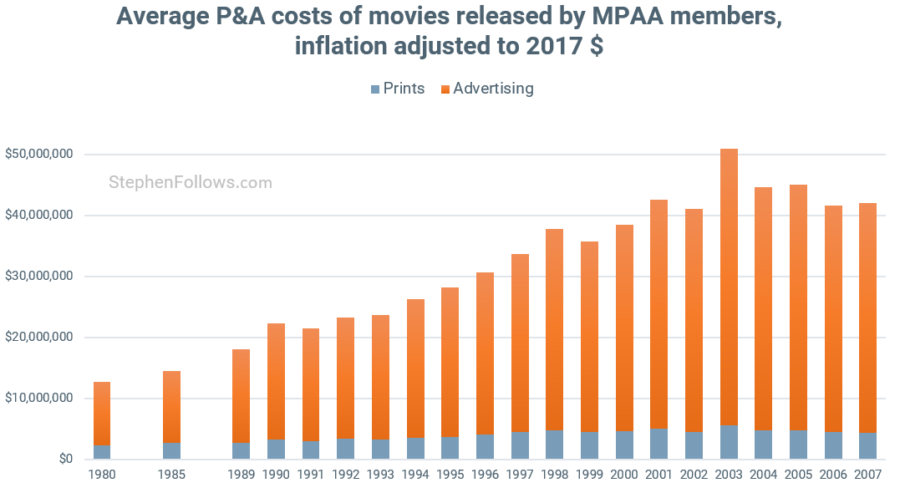
When all costs are taken into account, digital distribution is cheaper than physical distribution and so it’s likely that the trend will have continued past 2007, with advertising accounting for over 90% of P&A budgets.
The costs of theatrical distribution in the UK
We don’t have directly comparable figures for the UK, but the BFI does collect and publish some related numbers.
Firstly, using data from 159 British films released in UK cinemas during 2015, we can see the stark differences between the big and small films. British feature films with production budgets north of £10 million have an average P&A budget of just over £2 million. By contrast, films on the smallest scale (i.e. those with production budgets under £500,000) receive P&A budgets one hundred times smaller (an average of £20,000).
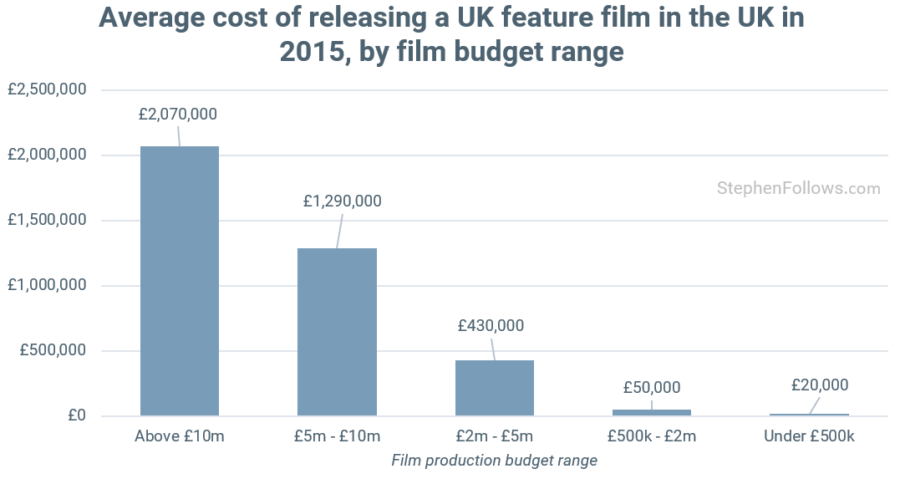
Another interesting dataset from the BFI looks at the average P&A spend for all films in UK cinemas, split by the number of cinema sites the film was shown in at its widest point of release. In the chart below, I have pulled out the figures from 2009 and 2015 to show how the average P&A spend is dropping. The fall is mostly due to the increased number of movies being released each year, rather than a decline in overall spending on P&A.
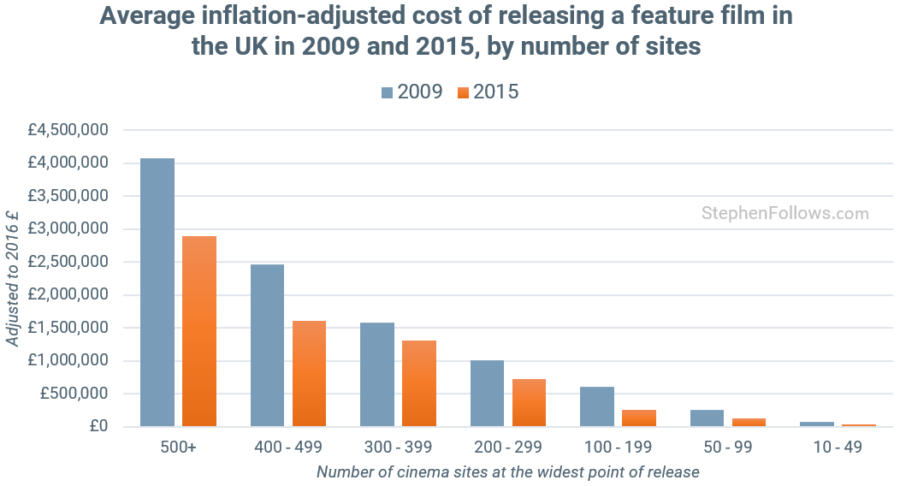
What is included in a Prints and Advertising budget?
Although the term “P&A” implies there are just two categories of costs, in fact there are three: Prints, Media and Other Costs. Let’s briefly look at each.
Prints
In the past, this would have involved creating 35 mm celluloid prints of the movie, but more recently this has become creating a hard drive containing a digital video file. The video file is encoded using the Digital Cinema Package (DCP) format and requires a second permissions file in order to play. This allows the DCP to be locked until a certain day or even to work on a particular projector. The distributor will need to pay for:
- The encoding of the original DCP file.
- Licenses for using any proprietary formats, such as Dolby’s audio technologies.
- Buying or renting hard drives, and having the DCP file transferred to each one.
- Shipping costs of getting the hard drives to the cinemas.
- The Virtual Print Fee (VPF), which is an extra charge paid by the distributor to the cinemas in order to repay them for the costs of upgrading to digital projects a decade ago.
Media
The largest proportion of a P&A budget will be going to the cost of running trailers and promotional spots. These typically play in one of five places:
- Television
- Outdoors (ie. billboards, buses, trains, etc)
- Press (i.e. newspapers and magazines)
- Radio
- Online
You may imagine that in the modern social media-heavy world, the largest amount of money is spent online. In fact, television currently accounts for over half the media spend on feature films in the UK, and it’s rising (53% in 2015 versus 42% in 2007). Nielsen Media Research estimate that the cost of all online film marketing in the UK in 2015 was just £700,000 – that’s less than 0.4% of the total £192 million spent on promoting feature films in the UK that year.
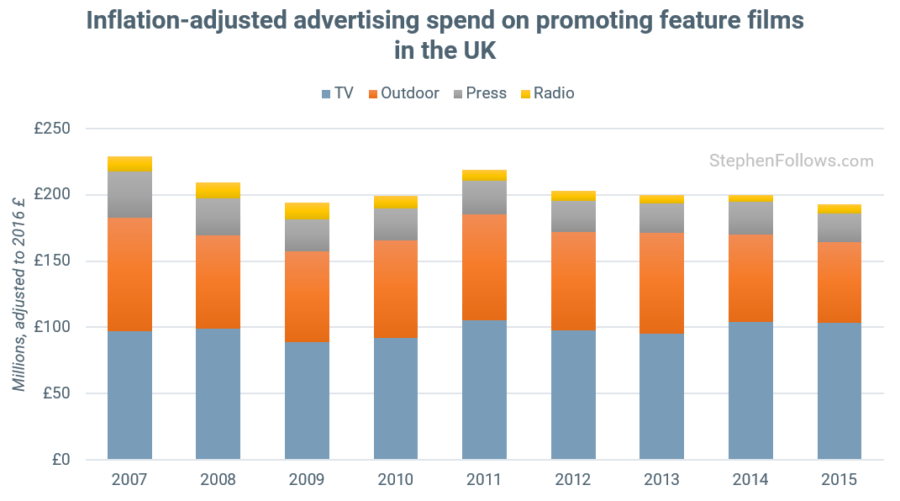
Note: the chart above excludes online marketing as Nielsen changed their estimation method in 2013 and so the figure of not comparable before and after that point.
Much of the media spend will be completed before the movie actually opens in cinemas (known as “Pre-Open”). If a film performs well in its opening weekend then the distributor may consider buying additional media slots (known as “Post-Open) in later weeks to capitalise on the film’s success. However, even in these cases, the majority of money spent on media will still be Pre-Open.
Other P&A Costs
The rest of the P&A budget is made up of a myriad of activities, including:
- Defining the brand of the movie, such as logo, font, colours, etc.
- Posters – designing, printing and distributing.
- Photos – On-set photography, poster images, publicity shots, etc.
- Press relations – Set visit for journalists and interviews upon release.
- Premiere and after party.
- Electronic Press Kit (EPK) which gives media outlooks footage behind the scenes and interviews with the key cast and crew.
- Research – focus groups, exit polls, testing possible posters and trailers, etc.
- Trailers – Creating and distributing prints to cinemas.
- Radio spots – Creative and distributing to radio stations.
- Television spots – Creative and distributing to TV stations.
- Printed materials for the cinemas such as banners, cinema front and standees.
- Travel and accommodation for the main actors (and possibly the director) as they travel promoting the movie.
Not all movies will use all of these possible activities but the larger the movie, the more like the Prints and Advertising budget will include all of the above list and possibly more.
What does a mainstream Prints and Advertising budget look like?
In order to give you a better sense of how the money is spent, below you will find a breakdown of a real Hollywood movie. This film was released in the past five years and had a production budget of around $30 million. I have been asked not to reveal which movie it’s from (for obvious reasons!) but this comes from someone I trust and I don’t doubt its accuracy in any way. This activity is just for the Domestic market, i.e. America and Canada.

Let’s look at some of those smaller categories in a bit more detail.
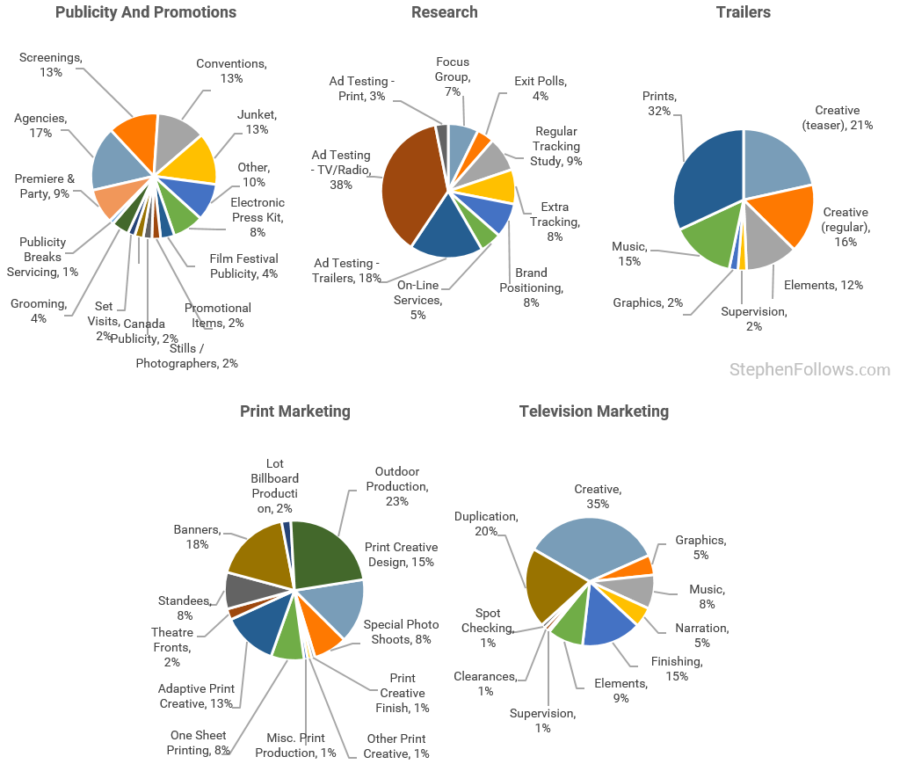
Notes
The UK data for today comes from estimates from Nielsen Media Research, via the BFI. I have inflation-adjusted all of the time series data to give a more accurate picture of how the sector is evolving. The USA data is via the MPAA and I used U.S. Department of Labor Bureau of Labor Statistics data to account for inflation.
Epilogue
If you have any questions, either about a recent article on the site or more generally about the film industry, then feel free to drop me a line. Some of the most interesting topics I cover come from reader questions.
NOTE: I’ve had to temporarily shut down comments on this article as for some reason it was getting a load of spam (i.e. over 20 drug-related messages a day) and a captca plugins seem to have issues so, for now, I’m going to close comments just on this article. Sorry.

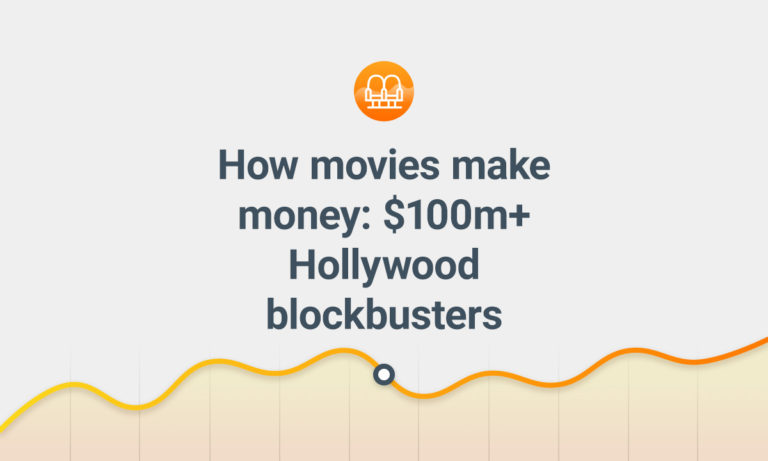
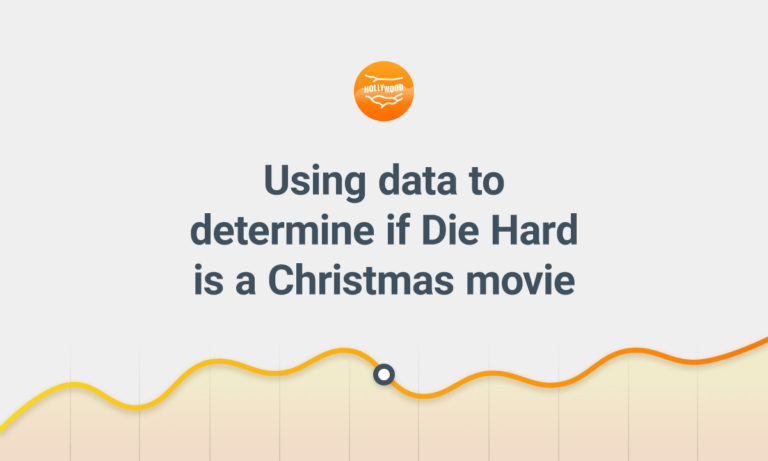
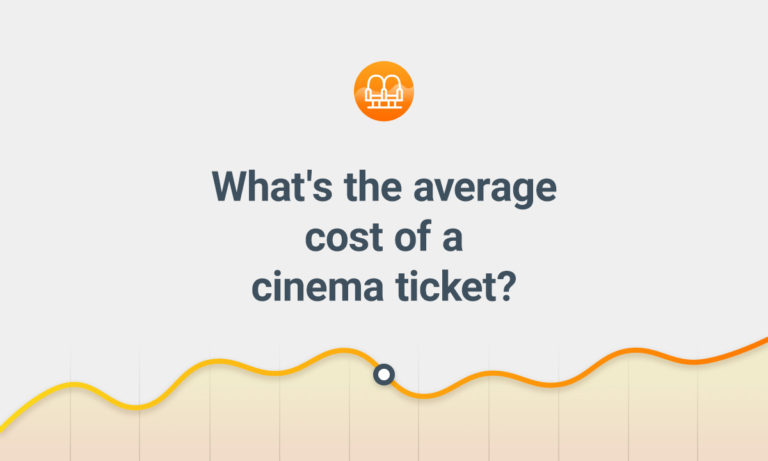

Comments
fantastically helpful – as ever!
Comments are closed.